Here, I’ve explained (with pictures) which dimensions you should measure when buying a new fork or new headset bearings. If you get confused with any terms/names, see: Names of bicycle fork, head tube and headset parts.
Table Of Contents (T.O.C.):
- Important fork dimensions
1.1. Fork crown diameter
1.2. Steering column diameter
1.3. Steering column length
1.4. Stem column diameter (for threaded forks) - Important head tube dimensions
2.1. Diameters of top and bottom head tube openings
…..2.1.1. Bearing cup support dimensions (for integrated bearings)
2.2. Head tube length - Important dimensions of headset bearings
3.1. Fork crown race inner diameter
3.2. Outer diameter of headset bearing cups
3.3. Ball bearing, or cartridge bearing diameter
TL/DR
When you’re looking to swap a fork or replace the headset (steerer) bearings, there are just a few dimensions you must measure on your fork and your frame’s head tube.
This article is long, but don’t let that scare you – a lot of its “length” comes from pictures – they speak louder than words. 🙂
The table of contents should let you easily “skip” to the sections you need.
If you need more info, here is my full Fork & Headset article series:
- Bicycle fork models and brake mounts
- Headsets [01] Names of fork and headset parts
- Headsets [02] Important fork, head tube and headset dimensions
- Headsets [03] Headset bearings standards – SHIS
1. Important fork dimensions
1.1. Fork crown diameter
Fork crown diameter. Best done with Vernier calipers.

Picture 1
This dimension is important for choosing appropriate fork crown race and matching head tube (inner) diameter.
A separate article explains how to remove the fork crown race with DIY tools.
1.2. Steering column diameter
For “tapered” forks (with steering column wider near the crown), diameter should be measured on the upper half. For “ordinary” forks it doesn’t matter.
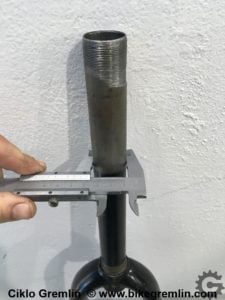
Picture 2
This dimension is important for choosing headset bearings and matching the head tube.
1.3. Steering column length
Nothing to it – just a tape measure and it’s done. 🙂

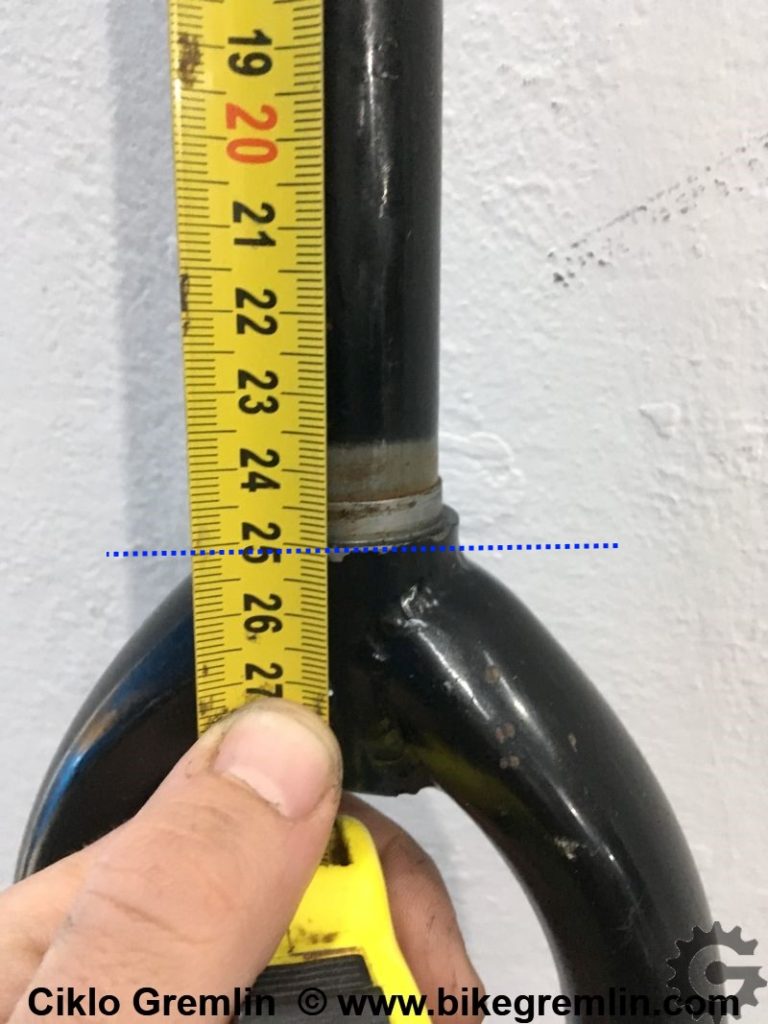
Steering column should be longer than the head tube – so that top and bottom bearing can fit with some room above for lockrings (for threaded forks), or stem attachment (for threadless forks).
1.4. Stem column diameter (for threaded forks)
For threaded forks, where stem column is fixed with a quill, inside the steering column, outer stem column diameter, as well as inner steering column diameter, must be compatible and their dimensions are thus important.
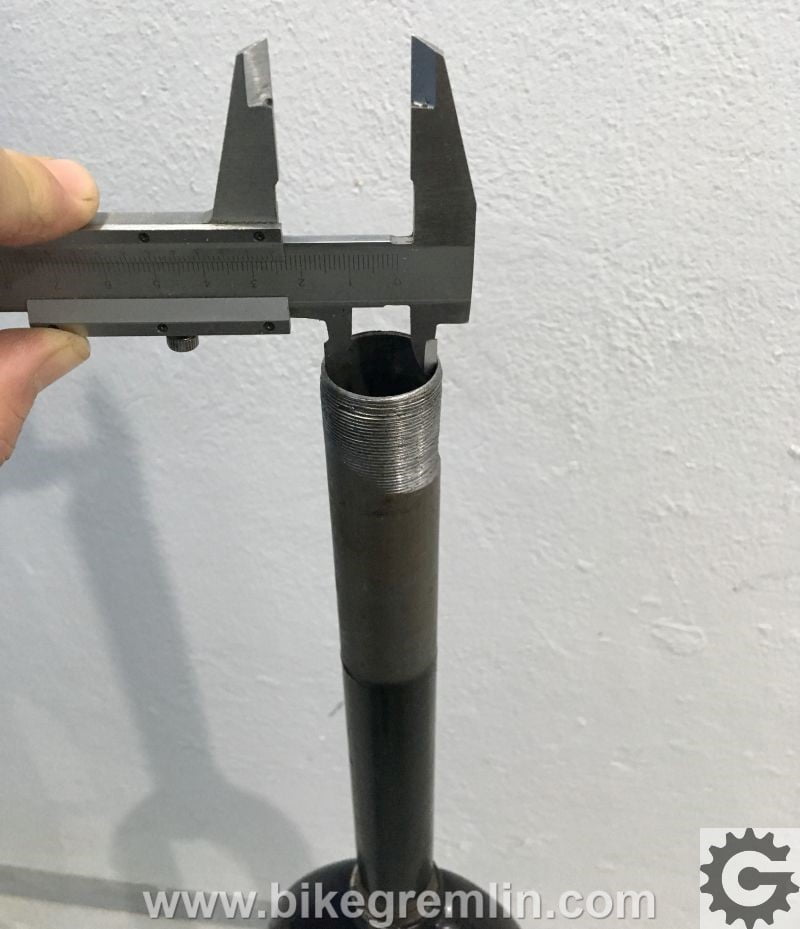
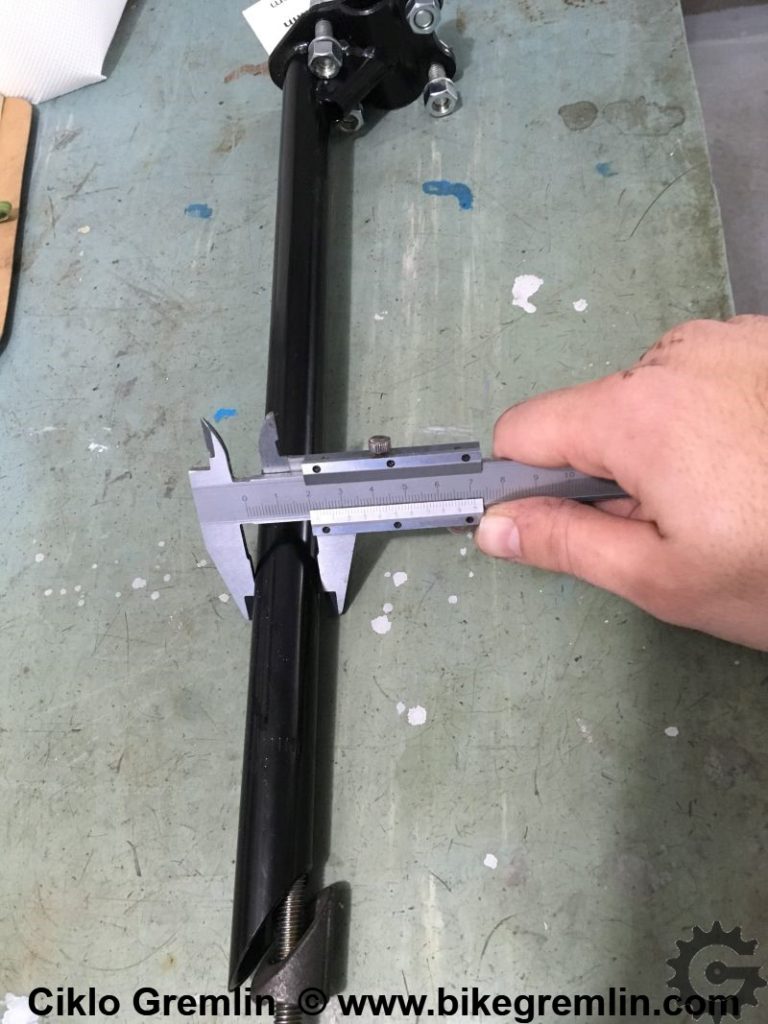
2. Important head tube dimensions
2.1. Diameters of top and bottom head tube openings
Head tubes for tapered forks have lower opening diameter visibly larger than the top one. Measuring diameters at head tube ends is important since that is where headset bearings should fit.
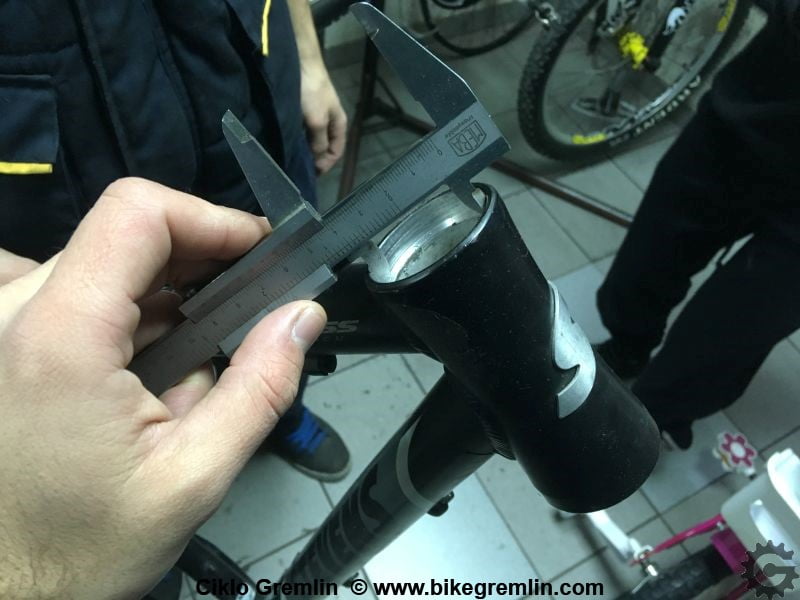
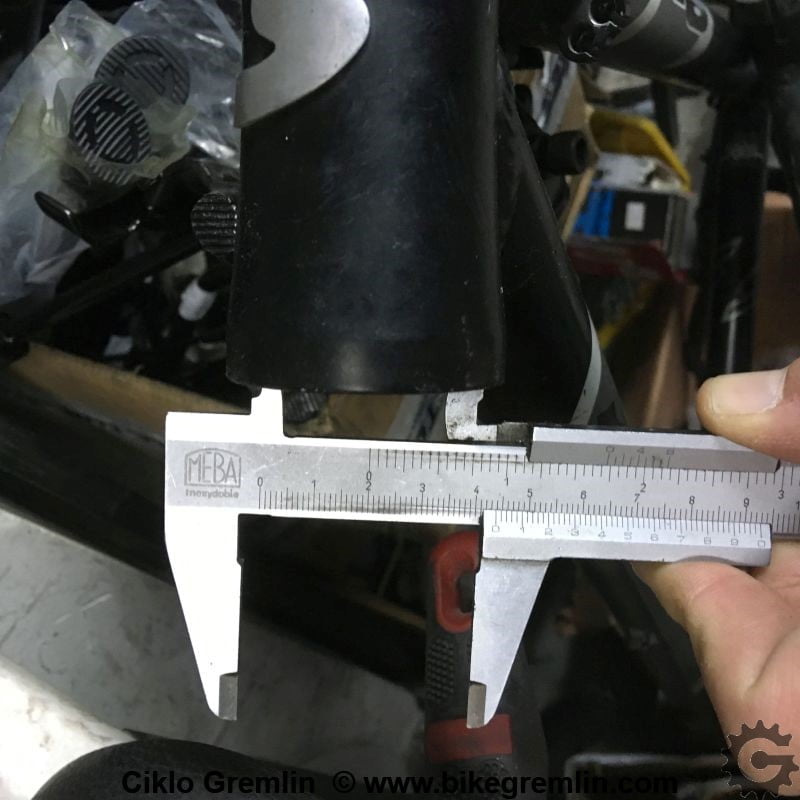
2.1.1. Bearing cup support dimensions (for integrated bearings)
With head tubes for integrated headset bearings, it is also important to check the depth of the bearing grooves, as well as the angle at which the angle is made. Obsolete standard is 36 degrees and the current is 45 degrees. More on this in a following post about headset standards.

Picture 6
2.2. Head tube length
This dimension is necessary for choosing appropriate (minimal required) steering column lenght.
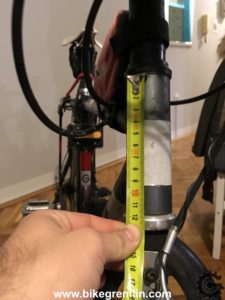
Picture 7
3. Important dimensions of headset bearings
3.1. Fork crown race inner diameter
This dimension is important to see if the crown race fits the fork crown (onto which it is pressed).

Picture 8
3.2. Outer diameter of headset bearing cups
Cup diameter is important since it needs to match the diameter of a head tube it is pressed into. Dimension of the cup part that is pressed into the head tube is the important one.
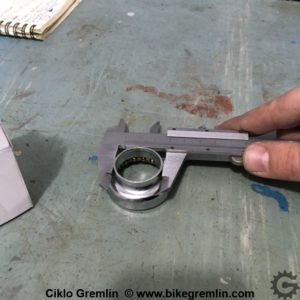
Picture 9
In (an extremely rare) case that head tube for external bearings has different top and bottom opening diameters, that should be noted when choosing appropriate cups (and bearings). For such tapered head tubes (and forks), internal bearings are commonly used. Measuring internal bearing cup diameter principle is the same, just the part that remains outside the head tube is much smaller.

Left – internal
Right – external
Picture 10
3.3. Ball bearing, or cartridge bearing diameter
For bearings that use loose balls, bearing ball diameter should be measured when replacing them. For modern cartridge bearings, the whole bearing is measured.
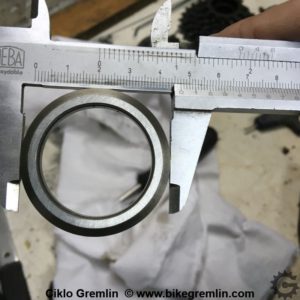
Picture 11
Other important dimension is the angle the cartridge bearing is finished with. This is primarily important for integrated bearings.

Picture 12
This angle can be eyed, or the bearing can be leaned on a solid flat surface with the angled part down, then measured, or eyeballed – is the angle half way to vertical, or sharper.
This concludes the overview of important dimensions related to steerer (headset) bearings. Post explaining standard dimensions and (SHIS) nomenclature: Bicycle headset bearings standards – SHIS.
